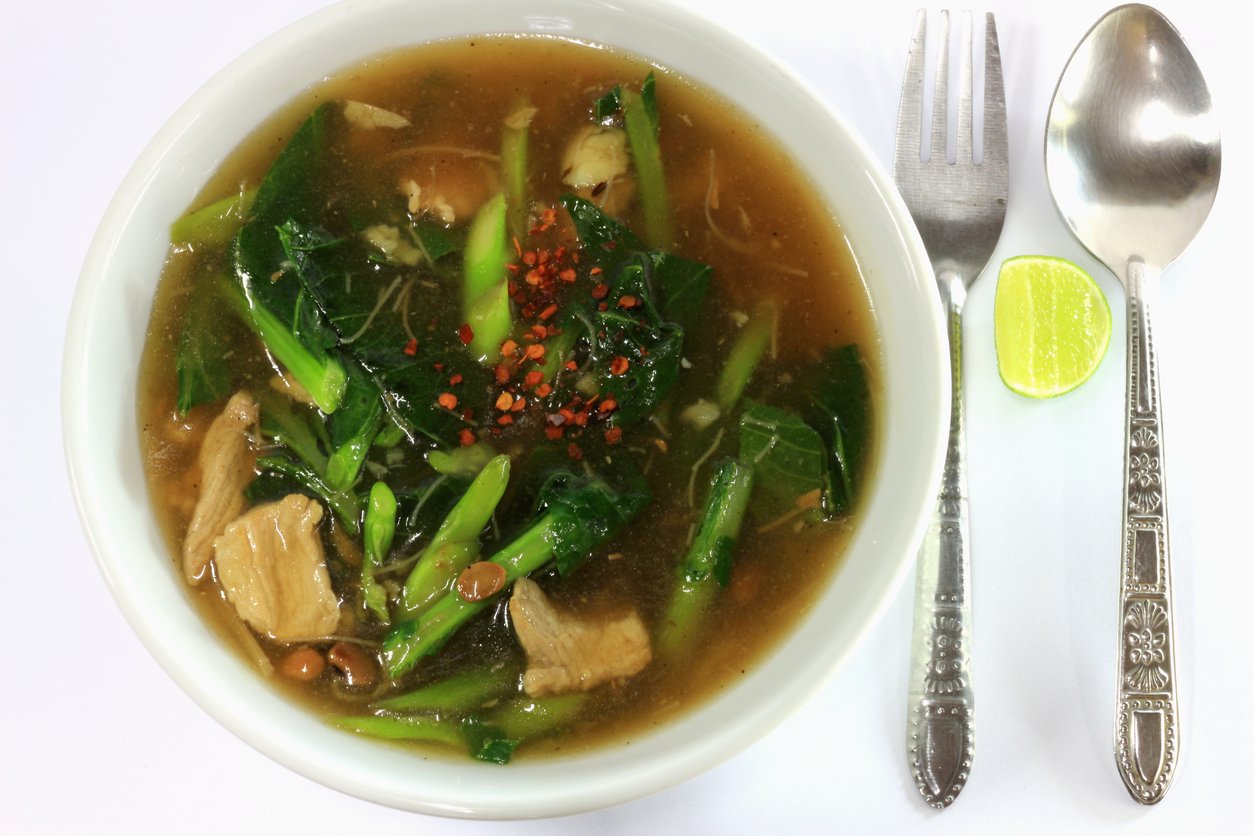Oh, bok choy, let us count the ways we love you!
Brimming with over 70 antioxidant phenolic compounds, this is one cruciferous to keep on frequent rotation in your diet. Aim for a serving of 1 cup cooked, at least three times a week (five times would be even better) and definitely mix and match with other cruciferous veggies.
Bok choy, a.k.a. Chinese white cabbage or pak choi, is a proud member of the brassica family – famed for its anticancer properties – and runs with other greats like Brussels sprouts, cabbage, cauliflower, collard greens, turnips and broccoli. The abundance of vitamins, minerals and phytonutrients found in bok choy impart many potential benefits to those who eat it [i].
Antioxidant Benefits of Bok Choy
Bok choy is a powerhouse when it comes to antioxidants. Not only is it an excellent source of conventional antioxidants such as vitamin A, vitamin C and zinc, but it also has a plethora of phytonutrients – polyphenols, flavonoids, kaempferol, glucosinolates and many more that seem beyond pronunciation. (Recall that glucosinolates are reported to be the anticancer fighting agent in the brassica family.) The array of antioxidants and phytonutrients is noteworthy because, as we are learning, different antioxidants go about their tasks in different ways, so eating a variety of them ensures a multi-level affront on free radicals. If you are like me and believe in making food work for you, bok choy is one heavy hitter [i].
Bok Choy & Blood Pressure Management
With a reported amount of 630 mg of potassium per 1 cup of steamed bok choy, this bright green veggie is another great way to reach for the recommended daily intake of 4700mg of potassium. And why should you strive for that RDI, you ask? Well, potassium seems to lessen the effects of sodium. It is a vasodilator and diets deficient in this mineral have shown to be an independent factor of high blood pressure. Another mechanism of efficacy is that potassium helps to increase urinary losses of sodium. Of course, one still needs to monitor sodium intake, but striking a balance between the two seems to be key as a high sodium to potassium ratio can lead to increased risk for hypertension and heart disease. This whole-heartedly (pun intended) supports why diets emphasizing potassium rich foods like fruits, vegetables and whole grains are so effective at lowering blood pressure (think Mediterranean and DASH diets) [ii].
Bone Health
Healthy bones require a variety of nutrients for growth and maintenance and bok choy packs a great many of them, including vitamins C and K, potassium, phosphorus, magnesium, calcium, manganese and zinc. Vitamin K is an under appreciated vitamin in the laymen’s world of bone health despite its crucial role in bone formation and density. Bok choy and other members of the brassica family are excellent sources of this often overlooked vitamin. Throw in some vitamin D and weight bearing exercise and you are on the path to maintaining a healthy bone matrix [v].
Anemia Support
Anemia is a common complication of cancer treatment. Bok choy contains the red blood cell promoting nutrients of iron, folate, zinc and vitamin B6. It also has vitamin C, which aids with iron absorption. And as an added bonus, folate is an essential part of DNA synthesis and repair, so having sufficient amounts may reduce DNA mutations and subsequent carginogenesis.
With its myriad of outstanding health benefits, we think nothing says, “I love you”, like a bouquet of bok choy.
Selecting, Storing and Preparing Bok Choy
Bok choy is available year around, but peaks during the winter months through early spring. Look for full, bright green leaves and moist, hardy stems that are usually white, but can also be cream colored or light green. You can store them in the refrigerator for up 1 week, unwashed, in a tight plastic bag to prevent it from drying out. As with most brassica vegetables, the anticancer properties are best obtained when just lightly cooked (steamed or sautéed) or even when consumed raw. Tossing them into soups at the end is a wonderful way to save some of their crunch while also slurping up the leeched phytonutrients in the broth [vi].
Check out the recipe below for a light and easy soup that is sure to warm you up in this wintery month. (I also like the healthy dose of ginger here, too.)


- 2 teaspoons dark sesame oil
- Cooking spray
- 2 (3 1/2-ounce) packages shiitake mushrooms, trimmed and thinly sliced
- 3 tablespoons chopped peeled fresh ginger
- 3 cups fat-free, less-sodium chicken broth
- 3 cups water
- 1 tablespoon low-sodium soy sauce
- 3 cups coarsely chopped baby bok choy
- 2 tablespoons sliced green onions
- 2 tablespoons chopped fresh cilantro
- 1 pound peeled and deveined shrimp
- 1/4 cup fresh lime juice (about 3 limes)
- Heat oil in a large Dutch oven coated with cooking spray over medium-high heat; sauté mushrooms and ginger 5 minutes or until liquid evaporates and mushrooms darken.
- Add broth, 3 cups water, and soy sauce; bring mixture to a boil. Stir in bok choy and next 3 ingredients; cover, reduce heat, and simmer 3 minutes or until shrimp are done. Stir in lime juice just before serving.
- You can use most any greens in place of the baby bok choy, including spinach or napa cabbage.

Sounds Great and also Easy.
Thanks.